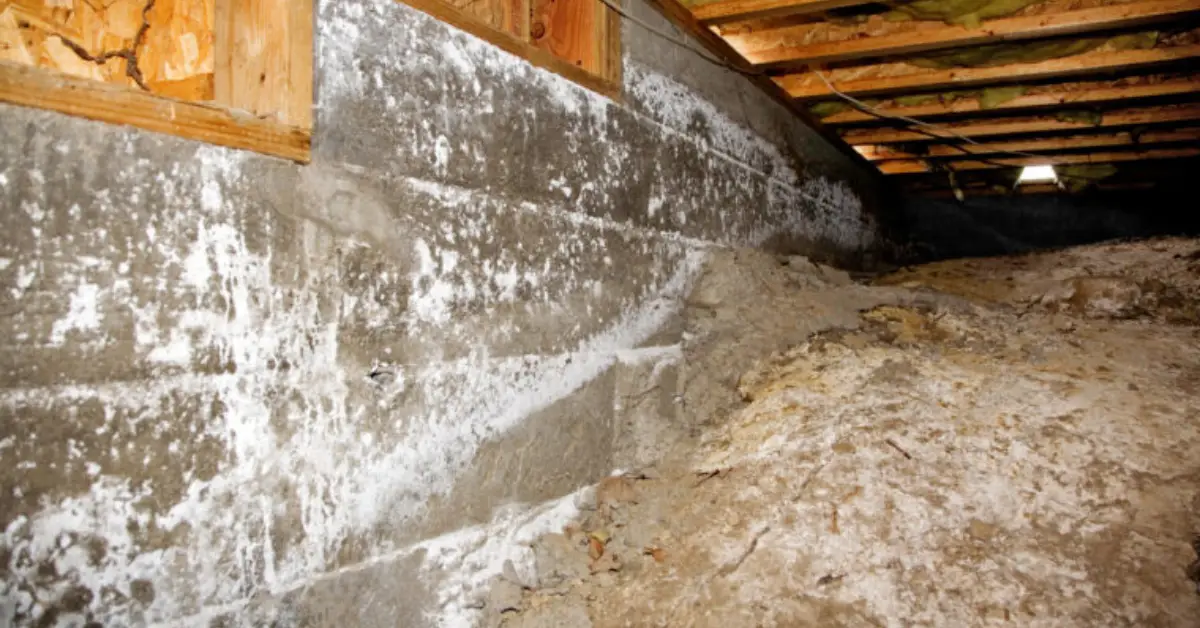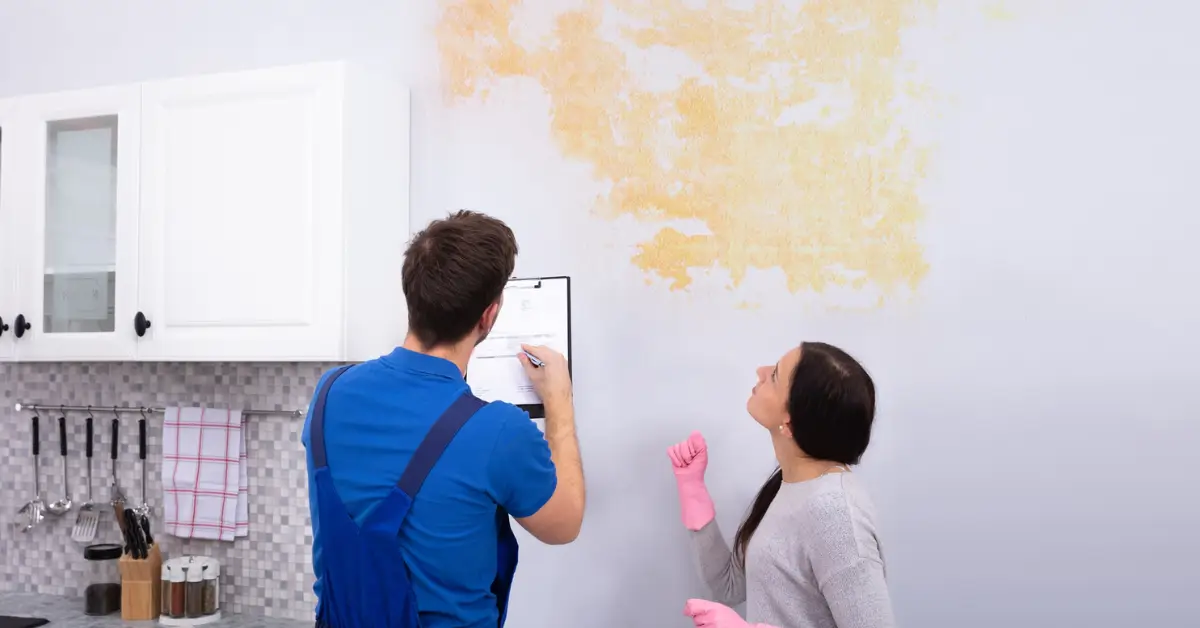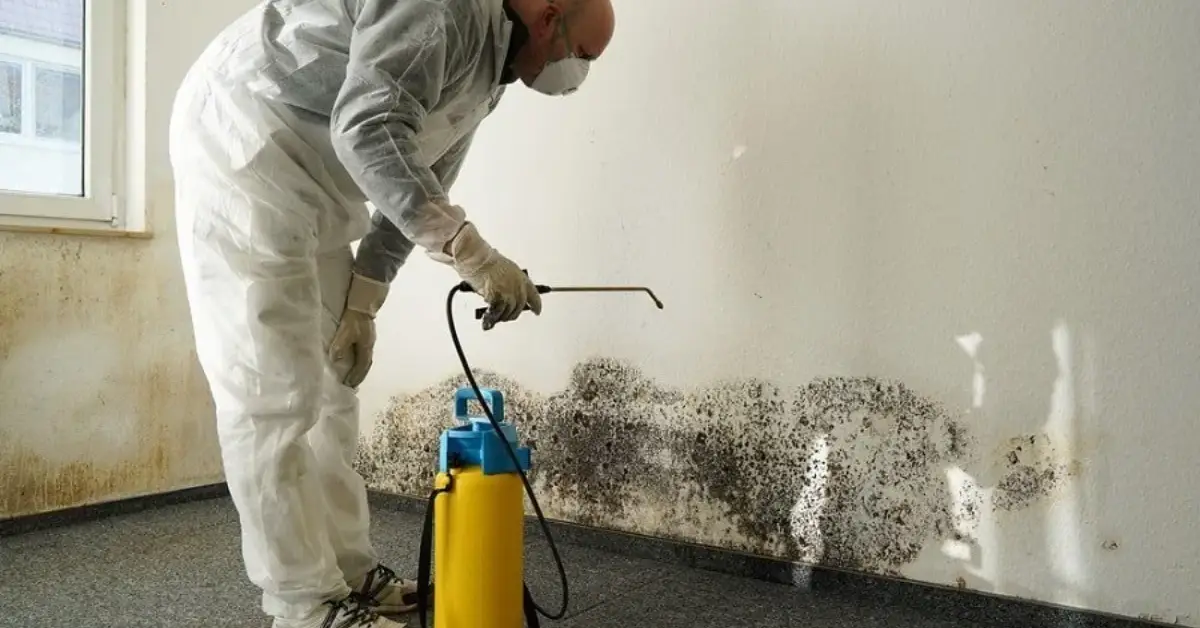10 Simple Ways to Get Rid of Musty Smells in Your Home Fast
I walked into my house one day and caught that damp, earthy smell I couldn’t ignore. It wasn’t exactly foul, but it lingered — that musty scent that makes you wrinkle your nose and wonder, what’s going on here? I opened windows, sprayed freshener, even scrubbed the floors, but by the next morning, it was back.
If you’ve ever dealt with that kind of smell, you know how frustrating it can be. You start to second-guess everything — is it the carpet? The basement? Something worse hiding behind the walls? The truth is, a musty smell isn’t just “old house odor.” It’s your home’s way of telling you that moisture, bacteria, or hidden mold might be setting up camp somewhere you can’t see.
I’ve spent years helping homeowners figure this out, and the surprising thing is, most of them look in the wrong place first. The real culprits are often small, sneaky, and easy to miss — a bit of damp insulation, a slow leak, or even forgotten items in storage.
In this guide, I’ll walk you through the top 10 causes of musty home odors and how to fix each one for good. No quick-spray tricks, no vague advice — just practical, tested solutions that actually work in real homes like yours.
So, if you’ve been wondering why your house smells musty no matter how much you clean, let’s finally get to the bottom of it.
Quick Smell-Source Confirmation (5-Minute Checks)
Before you start pulling up carpets or calling a mold specialist, take five minutes to do a quick reality check. You’d be surprised how often the source of that musty smell is hiding in plain sight. I’ve learned that when you slow down and look (or sniff) in the right places, the pattern usually reveals itself.
Here’s what I always do first — simple, no tools required.
Sniff Test Zones (Basement, Attic, Kitchen, Closets)
Start by following your nose. Walk slowly through your home and pay attention to where the smell feels strongest.
You’ll usually find clues in a few common spots:
- Basement or crawl space: These are moisture magnets, especially if there’s poor drainage or old insulation.
- Attic corners: A roof leak or damp insulation can trap humidity for months.
- Kitchen or laundry area: Check under sinks, around dishwashers, and behind washing machines for tiny leaks.
- Closets or storage rooms: Musty odors here usually mean clothes or boxes have absorbed humidity.
Take a slow breath in each area — if one spot hits your nose harder, you’ve already narrowed your search.
Use a Portable Hygrometer or Moisture Meter

If you’ve never used one, this small device is your best friend. A hygrometer or moisture meter tells you how damp the air or surface really is — something your senses can’t always detect. I like to keep mine handy when I’m checking basements or attics.
- Ideal indoor humidity: 30%–50% (anything higher encourages mold growth).
- High readings on walls or wood: That’s a red flag — moisture might be seeping in.
- Consistent dampness in one area: Often points to a leak or hidden condensation problem.
You can find affordable, reliable meters online — The Spruce actually has a great guide on choosing one if you’re new to it.
Check if the Smell Intensifies When HVAC Turns On
This is one of the most overlooked clues. Turn your air conditioning or heating on and notice what happens in the first few minutes.
- If the odor gets stronger, it’s likely trapped somewhere in your ductwork or on dirty filters.
- If it disappears, your system might actually be filtering it out — which means the problem is elsewhere.
To test further, remove one vent cover and take a sniff near the duct. If the smell is strongest there, your HVAC system might be circulating stale or moldy air. A simple filter change or duct cleaning can make a massive difference.
If you’ve ruled out HVAC issues but still want your home to smell inviting, try using these 10 home sprays everyone is talking about — they’re simple, safe, and can instantly freshen up your space without masking deeper problems.
Top 10 Causes & Solutions (One by One)
After doing the quick checks, it’s time to look deeper. Most musty smells don’t come from one big issue — they build up slowly, hiding in places you wouldn’t expect. I’ve seen homeowners scrub floors, repaint walls, and replace carpets, only to realize the smell was coming from something entirely different.
Here’s a breakdown of the ten most common culprits — and what you can do about each.
1. Hidden Mold or Mildew Behind Walls or Under Flooring
If you can’t see mold but can smell that damp, earthy scent, it’s probably hiding behind drywall, tiles, or subflooring. Mold thrives anywhere there’s trapped moisture and little airflow.
Try this:
- Scan walls or flooring with a moisture meter — high readings mean moisture buildup.
- Drill a small test hole and use a flashlight or camera to check for black or green patches.
- If confirmed, don’t just paint over it. Use a mold-killing cleaner or call a professional remediation service.
- Consider a professional air test if the smell persists — spores might be spreading through your ventilation system.
2. Leaky Plumbing, Roof, or Pipe Penetrations
Even a tiny leak that drips once a day can soak drywall or wooden studs, leading to a stubborn musty smell. The tricky part? You often won’t see water marks until it’s already bad.
What you can do:
- Check under sinks, behind toilets, and near washing machines for wetness or discoloration.
- Look for stains on ceilings or walls — they usually mean a slow leak above.
- If you suspect hidden leaks, use thermal imaging or moisture sensors to confirm.
- Once repaired, dry the area completely with fans or a dehumidifier before repainting or sealing.
3. Poor Ventilation & High Indoor Humidity
If your home feels sticky or stuffy, it’s likely holding too much moisture in the air. Steam from showers, cooking, and even breathing can raise indoor humidity — creating a perfect environment for odors to grow.
Solutions that work:
- Run exhaust fans in bathrooms and kitchens every day.
- Crack open a window for a few minutes to let stale air escape.
- Use a dehumidifier and keep relative humidity between 30% and 50%.
- Regularly clean vents and air returns to help air circulate properly.
For more tips, Harvard Health explains how indoor air quality affects moisture and odor control.
4. Dirty or Clogged HVAC / Duct Systems
If that musty smell gets stronger every time you turn on the AC or heater, your HVAC system might be spreading it around. Dust, condensation, and mold can build up in coils or ducts over time.
Here’s how to handle it:
- Replace air filters every 1–2 months.
- Clean the AC coils and drain pan.
- Flush the condensate line — blockages here can cause standing water and bacteria.
- If ducts smell damp or dusty, schedule a professional duct cleaning.
5. Damp Basement or Crawl Space

Basements are practically designed to trap humidity. Concrete walls, poor drainage, and minimal airflow make them a breeding ground for moisture and mildew.
Quick fixes:
- Seal cracks in foundation walls with waterproof epoxy.
- Add a vapor barrier or heavy plastic sheeting to floors.
- Make sure downspouts drain water at least six feet away from your foundation.
- Use a sump pump or dehumidifier in high-humidity months.
6. Absorbing Materials (Carpets, Upholstery, Drapes)
Soft fabrics act like sponges for musty air. Even after cleaning, they can hold odors for years.
What helps most:
- Steam clean carpets and drapes at least twice a year.
- Sprinkle baking soda before vacuuming to absorb trapped odors.
- Wash removable cushion covers in hot water.
- Replace old rugs that still smell even after cleaning — fibers eventually trap bacteria permanently.
Once your fabrics are clean, you can also use DIY natural air fresheners made from ingredients like citrus, herbs, and baking soda to keep your home smelling fresh between deep cleans.
7. Damp Insulation or Attic Issues
If your attic or crawl space smells musty, damp insulation could be the reason. It’s often hidden until a roof leak makes it worse.
Fix it like this:
- Inspect insulation for discoloration or clumping — both signal moisture damage.
- Replace soaked sections immediately to avoid mold growth.
- Check for roof leaks, missing shingles, or poor ventilation.
- Install ridge or soffit vents to improve airflow.
8. Wallpaper Backing / Paint / Off-gassing Materials
Sometimes the smell isn’t biological at all — it’s chemical. Old wallpaper glue, vinyl coverings, or certain paints can trap moisture and release volatile organic compounds (VOCs) that mimic musty odors.
What to do:
- Peel back a small corner of wallpaper near problem areas to check for mold or dampness.
- Choose low-VOC paints for repainting projects.
- Allow freshly painted walls to dry completely before closing up the room.
- Run an air purifier to clear lingering VOCs.
9. Dead Animal or Pest Remnants in Walls or Ducts
It’s unpleasant but real — sometimes a trapped rodent or bird causes a faint musty or decaying odor that won’t go away on its own.
Steps to take:
- Sniff around baseboards and vents to localize the smell.
- Use a small inspection camera to peek into wall cavities or vents.
- Once removed, sanitize the area with an enzyme-based cleaner.
- Seal gaps, attic holes, or vents where pests could re-enter.
10. Dry Drains or Sewer Gas Intrusion
If the odor is stronger near bathrooms or laundry rooms, the problem might be a dry P-trap. These U-shaped pipes under your sinks hold water to block sewer gases — when they dry out, odors escape easily.
How to fix it:
- Pour a cup or two of water into any unused drains (like in guest bathrooms).
- Add a few drops of mineral oil to slow evaporation.
- Check for cracked or loose vent pipes on the roof.
- If it keeps happening, install a trap primer that automatically refills the P-trap.
Most musty smells come down to moisture + time — the longer dampness sits, the deeper it seeps into materials. Once you pinpoint the cause, you’ll notice the air feels fresher almost immediately. And trust me, when you finally walk into your home and smell nothing at all, that’s the cleanest scent there is.
How to Prioritize Checks — Decision Flow & Troubleshooting Matrix

If you’ve gone through the list of possible causes, it can feel like there’s too much to inspect. I’ve been there — it’s easy to jump from your basement to the attic and still feel lost. The trick is to follow a logical order that eliminates the biggest suspects first.
Start broad, then go narrow. Think of it as your smell detective checklist:
| Step | What to Check First | Why It Matters | What to Do If Positive |
|---|---|---|---|
| 1. Moisture & Humidity Levels | Use a hygrometer to measure humidity in each room | High humidity is the root cause of nearly all musty odors | Add a dehumidifier or improve ventilation |
| 2. Leaks & Water Damage | Inspect plumbing joints, ceilings, and basements | Hidden leaks cause damp materials and mold | Fix leaks and dry affected spots thoroughly |
| 3. HVAC & Air Circulation | Turn on your AC or heater | If odor intensifies, ducts or filters are contaminated | Clean coils, replace filters, or call for duct cleaning |
| 4. Fabrics & Surfaces | Smell carpets, curtains, and furniture | Soft materials trap moisture easily | Deep clean or replace if the smell persists |
| 5. Hidden Spots | Walls, insulation, crawl spaces | Odors here often mean hidden mold or pests | Use inspection tools or professional testing |
I always tell homeowners: solve what’s visible and measurable first, then move on to what’s hidden. Nine times out of ten, that approach saves hours — and sometimes, hundreds of dollars in unnecessary testing.
Preventing Musty Odors for Good
Once you’ve dealt with the smell, the last thing you want is for it to creep back in a few weeks later. The truth is, most people fix the symptom but not the source — and that’s where prevention makes all the difference.
Let’s talk about how you can keep your home fresh permanently.
Routine HVAC Maintenance Schedule
Your HVAC system moves air through every corner of your home, so it should never be an afterthought. Replace filters regularly, clean coils at least once a year, and check drain pans for standing water. A 20-minute check every few months can prevent weeks of frustration later.
Keep Indoor RH in the Safe Zone (30–50%)
Humidity control is the foundation of odor prevention.
Use a smart dehumidifier or humidity monitor in rooms that tend to get damp — especially basements and bathrooms. If readings stay above 55%, open vents or windows for airflow.
As noted by U.S. Environmental Protection Agency (EPA), maintaining proper humidity levels prevents both mold growth and structural damage.
Use Breathable Storage (Avoid Cardboard in Humid Places)
I’ve lost count of how many times I’ve opened a damp cardboard box in a basement and found that classic musty scent trapped inside. Cardboard absorbs moisture like a sponge.
Use plastic bins with tight lids or fabric containers that allow airflow. And always raise them off the floor on small pallets or shelves.
Controlled Ventilation Strategies (Mechanical + Natural)
You don’t need fancy tech to keep air moving — a mix of mechanical and natural ventilation works wonders.
- Use exhaust fans in bathrooms and kitchens.
- Keep interior doors open for cross-ventilation.
- Crack open windows during low-humidity days.
- For constant airflow, consider energy recovery ventilators (ERVs) — they balance fresh air intake with minimal energy loss.
Proper airflow doesn’t just keep odors away — it also helps regulate indoor comfort. If you struggle with warm, stuffy air during summer, check out these fan tricks that really work to beat the heat.
Seasonal Inspections (Roof, Gutters, Foundation)
Every season brings new moisture risks — spring rain, summer humidity, winter leaks. I like to do a quick 15-minute check at the start of each season:
- Clear gutters and downspouts
- Check roof shingles and attic for damp spots
- Inspect basement corners for seepage
- Reseal any visible cracks before they grow
These tiny habits, when repeated year-round, keep your home dry, breathable, and permanently odor-free.
When to Call Professionals & What to Expect

Sometimes, even after doing everything right — cleaning, checking humidity, and fixing leaks — that musty smell refuses to go away. That’s when it’s time to bring in a professional. Knowing when to stop guessing and call for help doesn’t make you less capable; it saves time and prevents the problem from spreading quietly behind the walls.
Here’s when it’s worth hiring an expert:
- Moisture testing: Professionals use advanced moisture meters and thermal imaging cameras to find hidden damp spots without tearing anything open. It’s quick, accurate, and often reveals what you can’t see or smell.
- Mold remediation: If the musty odor comes with visible mold, coughing, or allergy symptoms, don’t risk it. Certified remediation teams remove spores safely and treat surfaces to prevent regrowth.
- Duct cleaning: When your HVAC spreads the smell every time it runs, a deep duct cleaning clears out dust, bacteria, and mildew. Most companies also sanitize the vents afterward.
- Thermal imaging: This tool helps detect temperature variations caused by leaks or trapped moisture inside walls — the kind of issues that cause long-term structural damage.
Typical costs vary depending on your location, but here’s a ballpark range to help you plan:
- Moisture or leak inspection: $150–$400
- Mold testing and remediation: $500–$3,000+
- Full duct cleaning: $300–$700
- Thermal imaging scan: $200–$500
If the smell worsens after cleaning, spreads to multiple rooms, or triggers headaches or allergies, it’s time to make the call. The peace of mind alone is worth it.
Musty Odor Myths — Fact vs. Fiction
Over the years, I’ve heard dozens of “quick-fix” tricks people swear by for getting rid of musty smells — most of them do more harm than good. Let’s clear up a few common myths that keep circulating online.
“Just spray air freshener — it’ll cover it up.”
Fact: Air fresheners only mask the odor. They don’t fix moisture or bacteria issues causing it. In some cases, the chemicals can make your indoor air quality even worse.
“A musty smell always means mildew.”
Fact: Not necessarily. While mildew is common, the smell could also come from damp insulation, leaky plumbing, or HVAC buildup. Treating only mildew may overlook the real problem entirely.
“If the smell’s gone, the issue is solved.”
Fact: Temporary disappearance doesn’t mean the source is gone — it might just be hidden. Smells can fade as the air dries, then return with humidity. Always confirm the cause before celebrating.
“You can bleach away mold completely.”
Fact: Bleach may remove surface stains, but it doesn’t penetrate porous materials like drywall or wood. The mold often grows back stronger. Use specialized mold removers or get professional help instead.
“Old houses just smell musty — that’s normal.”
Fact: Age has nothing to do with it. A well-maintained old home with good airflow can smell fresher than a new one with hidden moisture. Don’t ignore it just because the house isn’t new.
Understanding what not to do is just as important as knowing what works. Myths waste time — facts fix homes.
Conclusion
If your house has that musty, damp smell you can’t seem to shake, don’t ignore it or try to cover it up. Start small — measure humidity, check for leaks, and clean your vents — but know when to call in a pro. The sooner you act, the easier (and cheaper) it is to get that clean, fresh air back.
Every home has its quirks, but that stale smell doesn’t have to be one of them. Once you fix the root cause, you’ll notice more than just fresher air — your home will feel lighter, cleaner, and healthier.
What about you — have you ever dealt with a musty smell that just wouldn’t go away? Share your experience in the comments below.
For more real-world home improvement tips, fixes, and practical guides, visit Build Like New — your go-to place for making every corner of your home feel fresh again.
Disclaimer: The information in this article is for general educational purposes only and not a substitute for professional inspection or remediation services. Always consult a certified expert for persistent odor, mold, or structural moisture issues before attempting major repairs.


